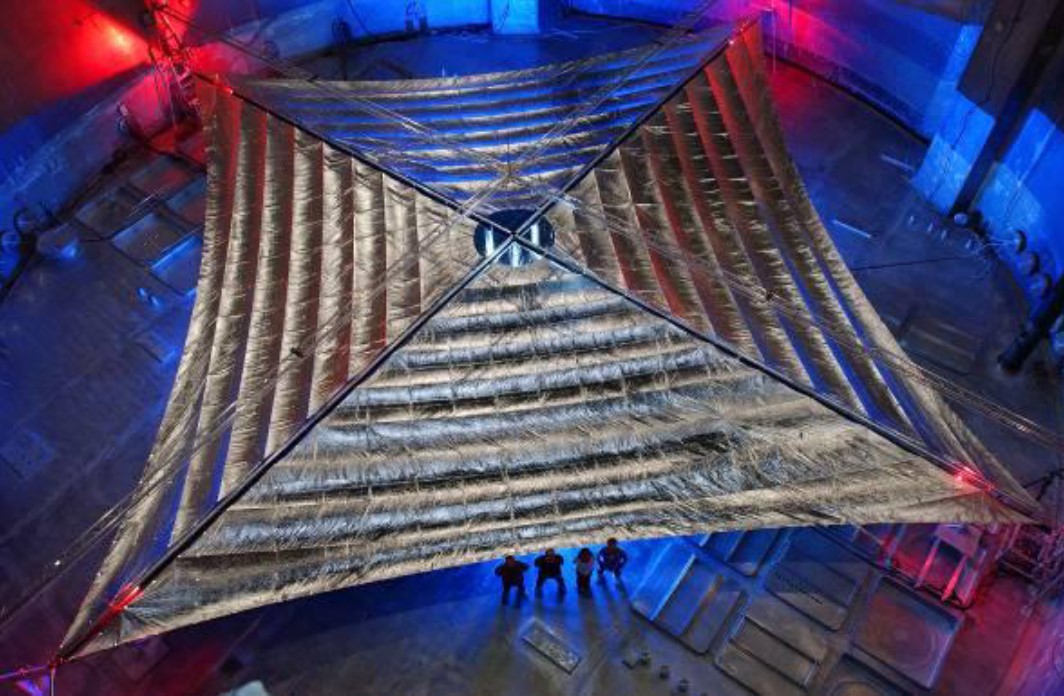Space exploration has evolved dramatically over the decades, and NASA is always working to improve their technology. Gossamer structures are lightweight and expansive and have been an area of interest for many years. They are used for a range of space applications, such as solar sails for propulsion and deployable antennas for communication.
Testing these structures on Earth presents a unique challenge. Ideally, they should be tested in an environment that mimics space as closely as possible – but most testing instruments cannot operate in that environment.
The delicate and lightweight nature of these structures also means that testing through direct contact could not only cause damage but change how the structure behaved because of mass loading. Making sure gossamer structures will withstand the vibration they will undergo in operation means measuring large area surfaces that are thinner than paper.
Testing NASA'a solar sail with Polytec Vibrometers:
The testing of a 20-meter solar sail at NASA's Glenn Plum Brook Facility is a prime example of Polytec's technology in action for a space application. The sail was subjected to conditions mimicking those in space, with Polytec's scanning laser vibrometry instruments accurately measuring its response to stimuli. Electromagnets were used to excite the structure to simulate the forces the membrane may go under in operation.
The use of a vacuum chamber was essential for the testing methodology. This allowed for an accurate simulation of the vacuum of space, providing a realistic context for assessing the structures' durability and functionality and ensuring the structures can withstand the harsh conditions they will encounter in operation.
Because laser vibrometry is a non-contact form of vibration measurement, and only requires line of sight, NASA was able to make accurate measurements in a vacuum chamber. They did this by using pressurised canisters with windows to house the vibrometers and mirrors to target what they wanted to measure.
A specially developed target tracking algorithm enabled automatic centring of the laser beam on each target. This significantly streamlined the testing process, allowing for more efficient and accurate data collection.
The data gathered from these tests provided critical insights into the dynamic behaviour of the sails in operation. This included understanding how they respond to external forces, a key factor in ensuring their successful deployment and operation in space. Not only did this allow NASA to understand how this solar sail would operate, it provided valuable insights into the dynamics of Gossamer structures, influencing future design and operational strategies for space missions. The methodology used in this case study was also used by NASA for other gossamer test programs, such as the antenna technology development program to validate large space-based communication antennas.
